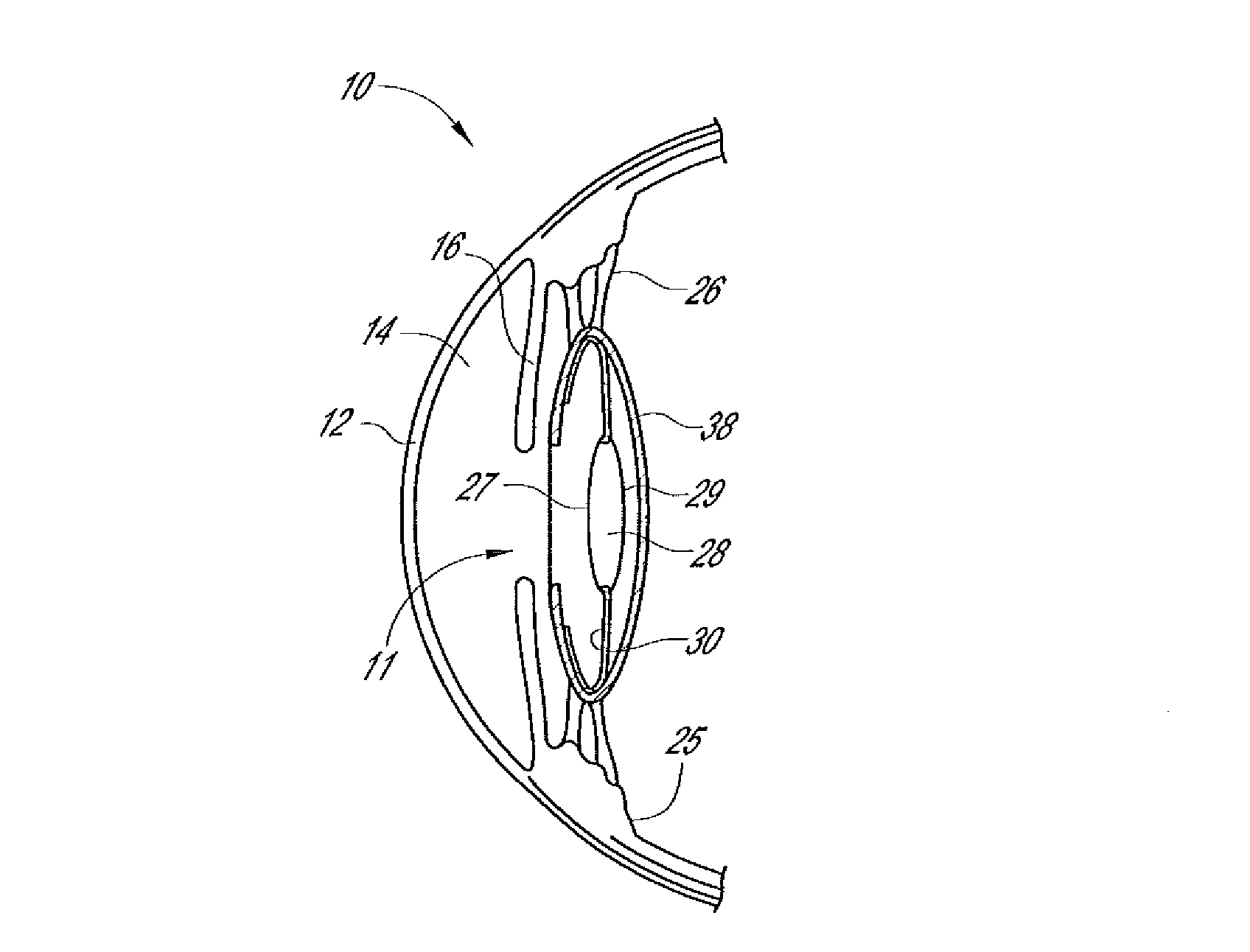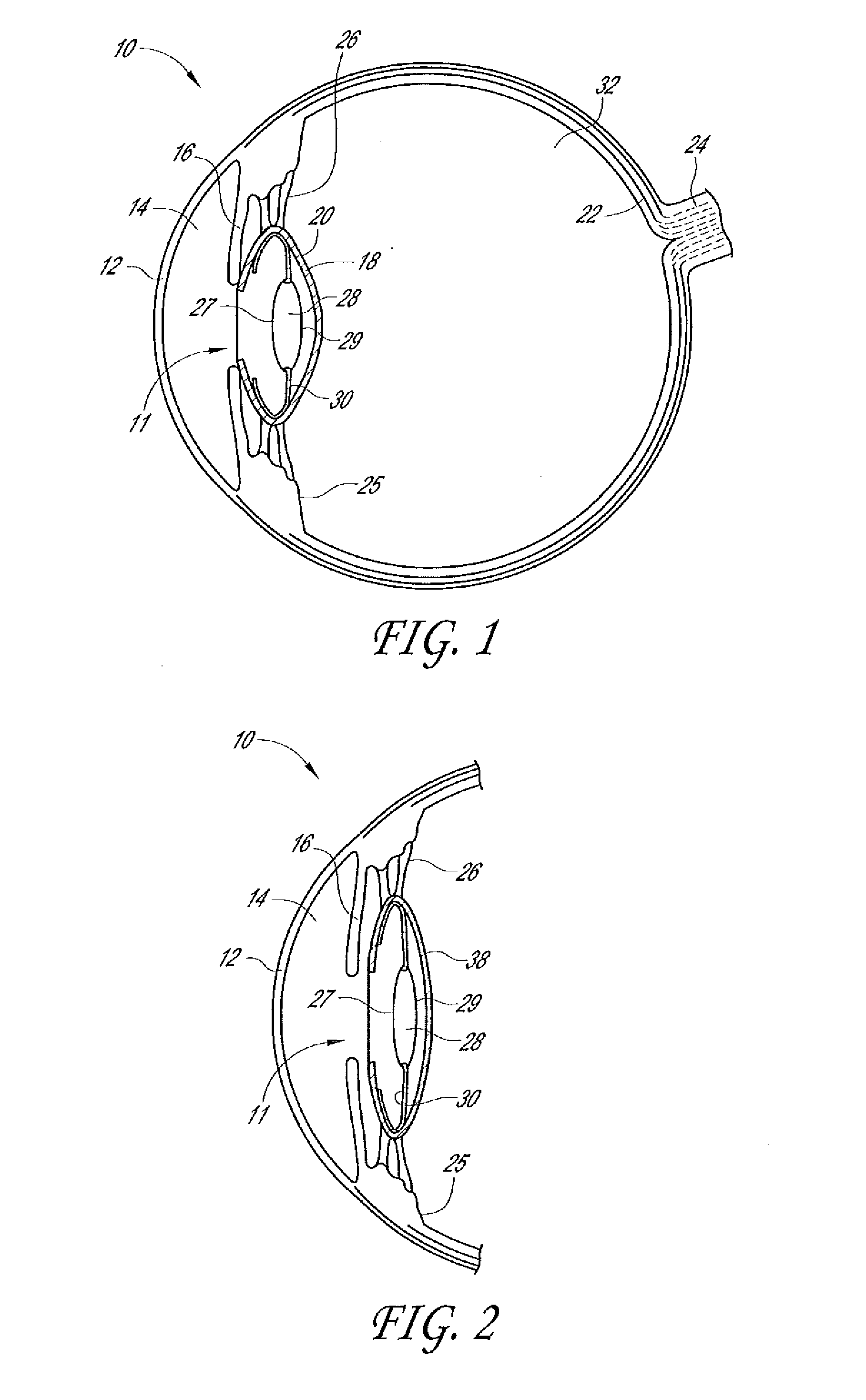Intraocular lens with shape changing capability to provide enhanced accomodation and visual acuity
a technology of intraocular lenses and shape changing, applied in intraocular lenses, medical science, prosthesis, etc., can solve the problems of affecting the vision of patients, affecting the comfort of patients, and affecting the effect of visual acuity, so as to enhance the accommodative
- Summary
- Abstract
- Description
- Claims
- Application Information
AI Technical Summary
Benefits of technology
Problems solved by technology
Method used
Image
Examples
Embodiment Construction
[0048]In a healthy human eye, the natural lens is housed in a structure known as the capsular bag. During natural accommodation, the capsular bag is driven by a ciliary muscle and zonular fibers (also known as zonules) in the eye, which can pull on the capsular bag to change its shape. The change in shape of the capsular bag generally deforms the natural lens in order to change its power and / or the location of the lens, so that the eye can focus on objects at varying distances away from the eye in a process known as accommodation.
I. Intraocular Lenses Adapted to Accommodate by Changing the Shape of an Optic
[0049]Embodiments described herein are directed to intraocular lenses that advantageously use ocular forces, such as those produced by the ciliary muscle, zonules, and / or capsular bag, to change the shape of the lens optic. Such an accommodating lens may produce improved vision over a lens with a fixed power and location that does not accommodate. As used herein the term “ocular f...
PUM
 Login to View More
Login to View More Abstract
Description
Claims
Application Information
 Login to View More
Login to View More - R&D
- Intellectual Property
- Life Sciences
- Materials
- Tech Scout
- Unparalleled Data Quality
- Higher Quality Content
- 60% Fewer Hallucinations
Browse by: Latest US Patents, China's latest patents, Technical Efficacy Thesaurus, Application Domain, Technology Topic, Popular Technical Reports.
© 2025 PatSnap. All rights reserved.Legal|Privacy policy|Modern Slavery Act Transparency Statement|Sitemap|About US| Contact US: help@patsnap.com



